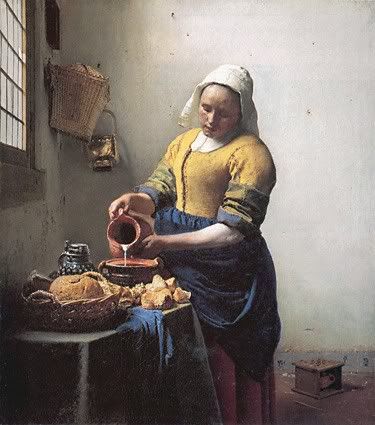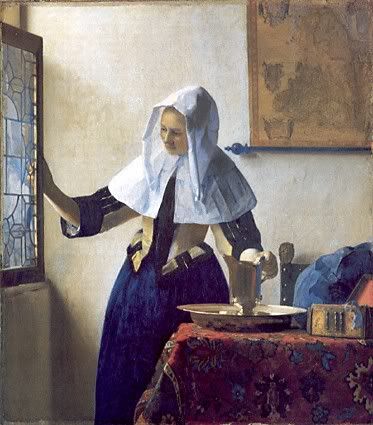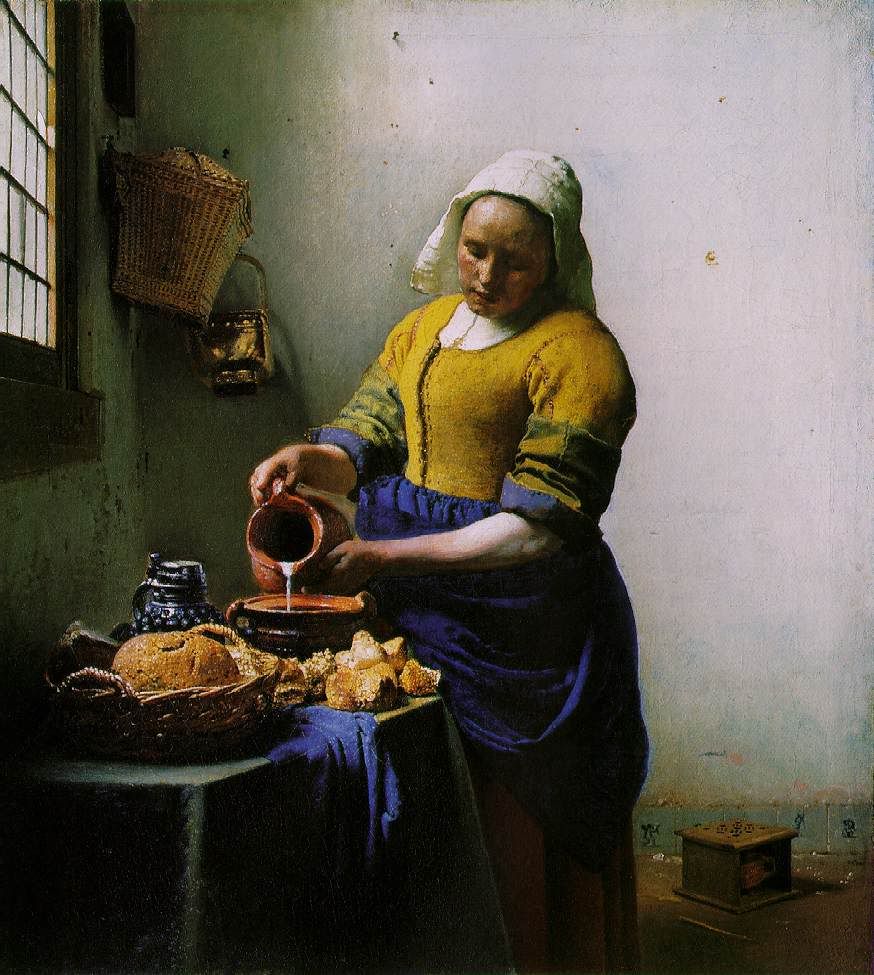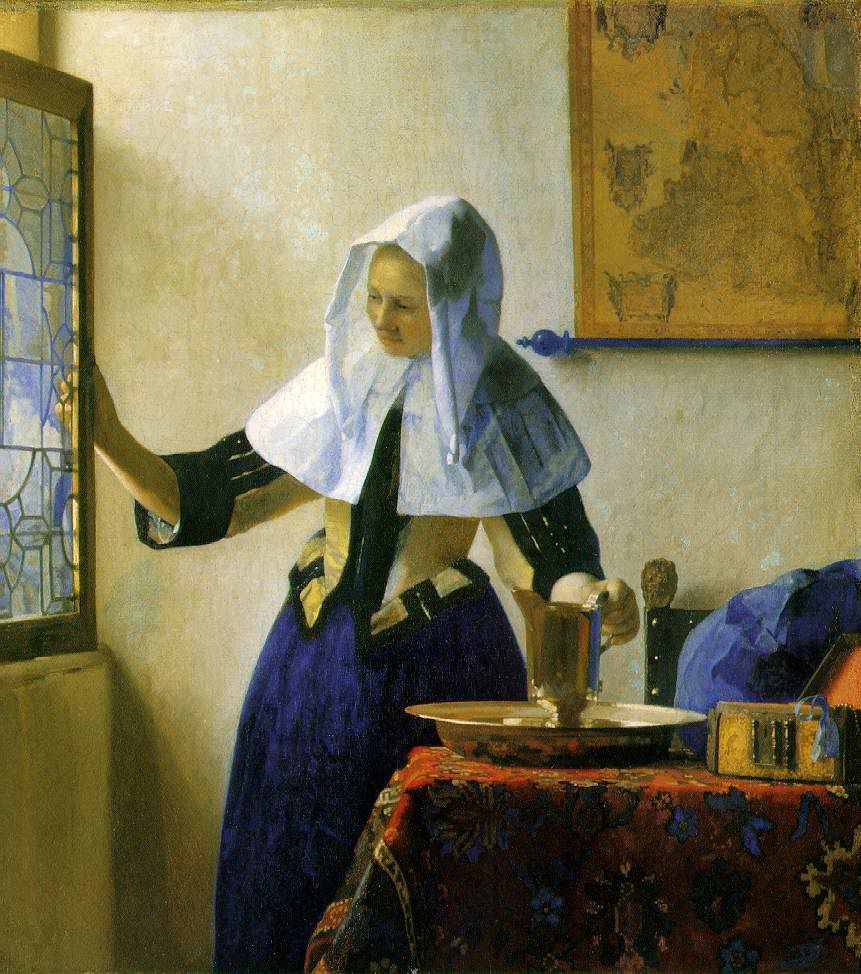
Milkmaid features a servant pouring milk from a pitcher into a bowl in front of a window. The table is draped with a muted green tablecloth and holds a draped blue cloth, bread in a basket and arranged around the bowl, and a blue jar. The maid’s clothing is simple, a gold top, dark blue overskirt, and dark red underskirt. Her sleeves are pushed up and out of the way for her work. Her head is covered with a simple linen, folded back so she can see her work. Behind her on the wall are a black frame, a basket, and a brass container. On the floor is a wooden footwarmer and tiles that are set into the wall where it meets the floor.

Young Woman shows a woman standing at a window, holding it ajar with her right hand, and with her left hand she is holding a golden pitcher as if she is about to lift it up. The pitcher is in a basin on a table draped with a tapestry that is red and contains blue, yellow, and brown in the pattern. Next to the pitcher sits an open box with scraps of blue fabric and jewels hanging out. Behind the table there is a leather studded chair overflowing with more of this blue fabric, probably a dress. On the wall is a large map of Netherlands. The young woman is wearing a gold and black bodice and a dark blue skirt. Her head is covered, as are her shoulders, in a white linen or cotton. Her clothes are finer than the milkmaid’s: she appears to be of a higher class.
While the two paintings are both of women with a pitcher they are very different upon closer inspection. In the Milkmaid the woman is middle aged, using a stoneware pitcher, and though she is standing near a window the room is dim. She is surrounded by things that have to do with her work and the room is plain: the walls have little decoration other than the tiles and are stained or damaged in places. The Young Woman, however, is young—in her early twenties—and does not appear to be as weighed down by life. The window is more ornate and the room is full of diffused light. Everything about the room speaks of beauty with the tapestry, delicate fabric, and ornate jewelry box.
Line in the Milkmaid is straight forward: everything points towards her task of pouring. Here the pitcher is the focal point and your eye moves around the room later, drawn outwards to see what lies beyond the milkmaid’s focus by the very objects that surround her. The objects on the table are situated as in a still life. Line in the Young Woman is more fractured: her arms point both toward the window and the metal pitcher. The bottom of the map points towards her face. Her gaze is out the window. There is more than one focal point here: one could cite the window, the young woman’s face, the pitcher, or the box as possible candidates.
Both paintings are set in the corner of a room. The walls help create depth. The table is set in front of the Milkmaid while beside the Young Woman, and both also provide perspective. The color in both paintings is very similar but the tints and shades emphasize the two women’s differences in status. The Milkmaid is painted with great detail and in muted tones. The Young Woman is wearing brighter hues that are much bolder but at the same time they have a softer quality because of what Vermeer did with the light. He didn’t make the young woman’s features as distinct which provides a sharp contrast to the plain milkmaid with a detailed face. It’s difficult to describe but both works are very different and beautiful in their own ways.
There are patterns in both works-—the jar, basket, and window in the Milkmaid, the window, bodice sleeves, and tapestry in the Young Woman-—but neither really move ones eye around the room. Both paintings are well balanced. The Milkmaid is simple, as is its occupant, and the white wall is a nice counterpoint to the dark clothes and fabric. Meanwhile the Young Woman feels like it is overflowing with things to look at on one side, which balances out the light that she emanates and the simplicity of both her features and the featureless wall behind her. There are a variety of objects to look at in both rooms and these help one’s eye move around the paintings. Each painting is pleasing to look at repeatedly because one can always discover something new every time she gazes at them.


No comments:
Post a Comment